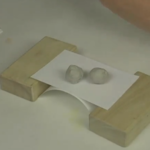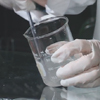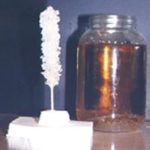
Civil Engineering Teleclass
Bonus Experiments
 Civil Engineering Program
Civil Engineering Program
If you want your kids to continue learning about bridges, sky scrapers, tunnels, buildings, and more, then click to get this special offer available today!
 Building Bridges
Building Bridges
What keeps building from toppling over in the wind? Why are some earthquake-proof and others not? We’re going to look at how engineers design buildings and bridges while making our own.
 Moon Sand
Moon Sand
Think of viscosity as the resistance stuff has to being smeared around. Water is “thin” (low viscosity); honey is “thick” (high viscosity). You are about to make a substance that is both (low and high viscosity), depending on what ratio you mix up.
 Rock Candy Crystals
Rock Candy Crystals
To make crystals, you need to make a very special kind of solution called a supersaturated solid solution. Here’s what that means: if you add salt by the spoonful to a cup of water, you’ll reach a point where the salt doesn’t disappear (dissolve) anymore and forms a lump at the bottom of the glass.
Building Bridges
What keeps building from toppling over in the wind? Why are some earthquake-proof and others not? We’re going to look at how engineers design buildings and bridges while making our own.
Materials:
- index cards
- blocks
- straws
- clay
- disposable cups
Questions
- What are three different kinds of forces?
- Using only blocks, what kind of wall design is the weakest?
- Why does the bridge seem stronger when a card is arched underneath?
This is a sample experiment taken from the e-Science Program in Unit 1: Mechanics
Moon Sand
A non-Newtonian fluid is a substance that changes viscosity, such as ketchup. Ever notice how ketchup sticks to the bottom of the bottle one minute and comes sliding out the next?
Think of viscosity as the resistance stuff has to being smeared around. Water is “thin” (low viscosity); honey is “thick” (high viscosity). You are about to make a substance that is both (low and high viscosity), depending on what ratio you mix up. Feel free to mix up a larger batch then indicated in the video – we’ve heard from families that have mixed up an entire kiddie pool of this stuff!
Materials:
- corn starch (about 2 cups)
- water (about 1 cup)
- sand (about 2 cups)
Moon sand is basically clay with a beach twist. If you’ve ever tried making a sand castle, you know the disappointment of having the structure crumble after hours of work. Moon sand adds the best properties of clay to the sand for a moldable, sandy texture that’s easy to work with — and it’s dirt cheap to mix up your weight in moon sand.
Your task is to find the perfect ratio of the three ingredients to make this weird substance. If you have too much water, you’ll get a substance that is both a liquid and a solid (as you did before with the non-Newtonian fluid). Too much solid, and it crumbles.
This is a sample experiment taken from the e-Science Program in Unit 3: Matter
Rock Candy Crystals
Crystals are formed when atoms line up in patterns and solidify. There are crystals everywhere — in the form of salt, sugar, sand, diamonds, quartz, and many more!
To make crystals, you need to make a very special kind of solution called a supersaturated solid solution. Here’s what that means: if you add salt by the spoonful to a cup of water, you’ll reach a point where the salt doesn’t disappear (dissolve) anymore and forms a lump at the bottom of the glass.
The point at which it begins to form a lump is just past the point of saturation. If you heat up the saltwater, the lump disappears. You can now add more and more salt, until it can’t take any more (you’ll see another lump starting to form at the bottom). This is now a supersaturated solid solution. Mix in a bit of water to make the lump disappear. Your solution is ready for making crystals. But how?
Materials:
- pencil or wooden skewer
- string
- glass jar (cleaned out pickle, jam, or mayo jars work great)
- 8 cups of sugar
- 3 cups of water
- paper clip
- adult help and a stove
- food coloring is optional, but fun!
If you add something for the crystals to cling to, like a rock or a stick, crystals can grow. If you “seed” the object (coat it with the stuff you formed the solution with, such as salt or sugar), they will start forming faster. If you have too much salt (or other solid) mixed in, your solution will crystallize all at the same time and you’ll get a huge rock that you can’t pull out of the jar. If you have too little salt, then you’ll wait forever for crystals to grow. Finding the right amount takes time and patience.
This is a sample experiment taken from the e-Science Program in Unit 3: Matter